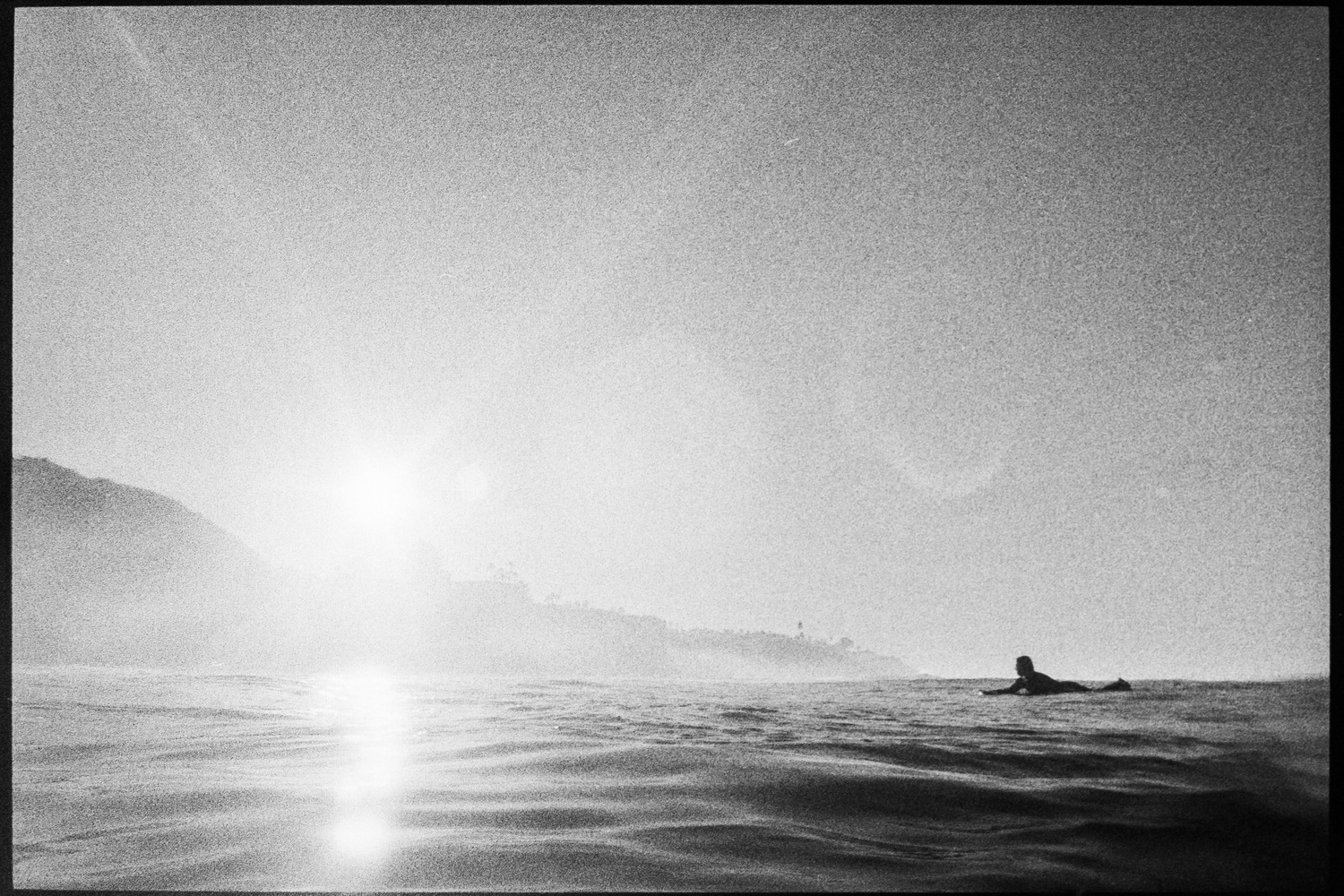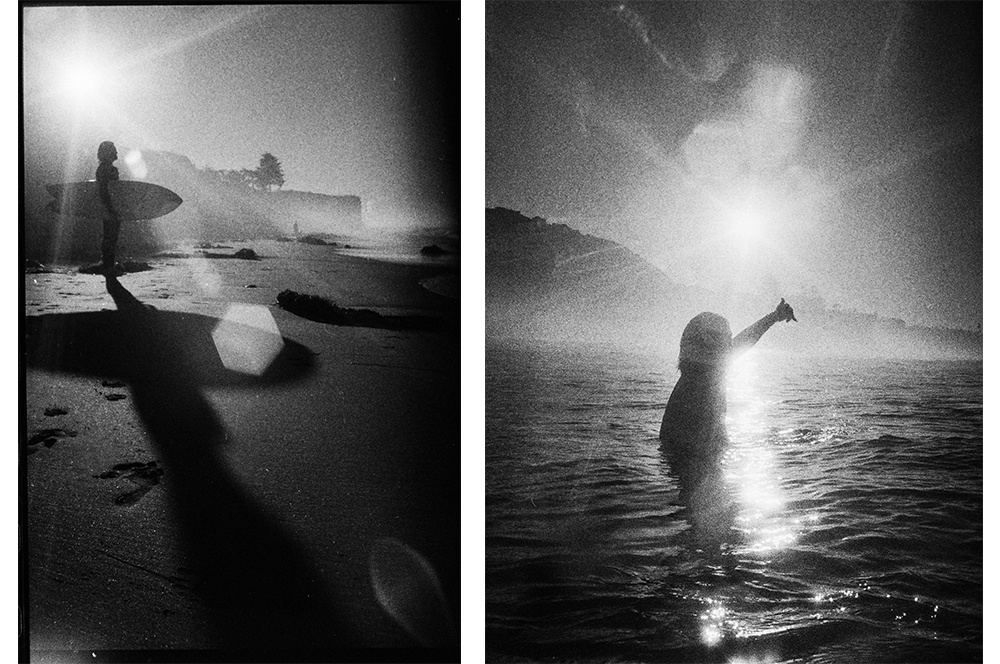Fstoppers Analog Review is a quick throw down on some of photography’s greatest equipment. In a world where we are constantly defined by the rapid progression of technology, these posts are intended to remind us about our love for the fundamentality of capturing life in silver and light. Each week we’ll review another piece of pivotal photography equipment, discuss the history, review its capabilities, and share our results! This review will go to the fabulous Nikonos V, a waterproof 35mm camera with a history as deep as diving itself. This handy sidekick will blow you away with its capability!
The Nikonos line runs five generations, hence the "V" for this latest version. The very first of this line of cameras was known as the Nikonos Calypso, produced by La Spirotechnique in 1962 in partnership with the famed Jacques Cousteau. The rugged design was revolutionary, allowing immediate access to the ocean environment without special attachments or housings. The first of its kind, the interchangeable lens system accounted for refracting light underwater.
Later, La Spirotechnique was purchased by Nikon. Nikon immediately recognized the potential of this camera and saw ways to make it more consumer-friendly and went on to produce four more generations of the camera. However, Nikon’s eyes were a bit too wide; an attempt to evolve the format into an SLR resulted as a massive failure. Efforts to return to the origins eventually led to the Nikonos V, a testament to the power of simplicity.
The Camera
The Nikonos V camera operates with a detachable scale focus lens. A simple reel-to-reel loading system with a manual advance lever means you get that classic "first-frame light leak" if you so desire. You have complete shutter control with options for 1/30, 1/60, 1/125, 1/250, 1/500, 1/1000, and Bulb mode. Built-in brains allow for aperture priority, making this camera a super handy companion. If used properly, you don’t really have to think about anything but composing your shot. If you're testing the dark depths of the camera, you're in luck: the body has a cold shoe mount for dive strobes. Nikon made a nifty battery powered strobe (the Nikonos SB-105) that will mount to the cold shoe and hook up via a connecting cable to a port on the bottom of the body for TTL shooting.
There is one pretty significant drawback that can take a little getting used to, and that’s the scale focus lens system. For those of you all still stuck in the world of DSLRs, scale focus (also known as zone focus) means that you’re trying to focus in an estimated distance with no real-time view of accuracy. What you see isn’t what the emulsion is necessarily seeing. This means you’re likely to miss focus at fast apertures and framing if shooting hastily.




The Lens
The 35mm interchangeable lens of the Nikonos has two dials. The silver one changes focus and simultaneously marks the center of the depth of field scale. The black one adjusts aperture. As you set your aperture, a two-needle readout on the front mechanically narrows or widens to estimate the depth of field limits for those settings. As you are shooting, your objective is to keep the subject somewhere in the middle of these two points to achieve best focus. This can be a lot of work, but simple workarounds and film selections can make operation extremely simple.

Operation
Loading the film is pretty straight forward: place the roll in the film compartment, thread the leader into the take up spool, and advance. There is a metal plate designed to keep the emulsion right where it needs to be, so make sure to thread your film under this flap. If you fail to load the film in front of the metal flap, you’ll (unsurprisingly) end up with 36 images of the wrong side of that plate (i.e. unexposed images).

@thekellerwhale Iford Delta 3200
The camera is pretty basic in application. The scale focus system makes for tricky estimates, which can be tough when you’re bobbing on the surface of the ocean or holding your breath on a reef. I can offer some personal tips on my approach, but by no means does this need to be gospel. Basically, I gravitate to higher-ISO films like Kodak Portra 800 for color and Ilford Delta 3200 for black and white. The Delta 3200 is known as a "push film," which means it is basically 1600 ISO, but you’re shooting and processing it at 3200 (see Push Process). Delta 3200 gives you super grainy, high-contrast photos (a personal favorite when shooting golden-hour images).
Shooting high ISO allows for you to compose your settings a little more casually since it allows you to shoot at narrower apertures while maintaining a pretty quick shutter, a helpful formula for shooting action when your feet aren’t actually planted on the ground. With Delta 3200 on a sunny day, you may find yourself shooting exclusively at f/22 with a shutter of 1/500 or 1/1000. With Portra 800, you’ll hang in the f/8 range with similar shutter speeds. There is no perfect formula for this, so if you’re unsure of yourself, set the aperture at a stop corresponding with the shots you’re trying to compose, set the camera on aperture-priority, and fire away.

However, I recommend against using aperture-priority. Simply put, the camera only goes up to 1/1000, so if you’re chasing some artistic images at f/4, you run the risk of over-exposure when the shutter maxes out. My general theory on internal systems is that you can’t always rely on them, but if you understand how they work, you can rest briefly on them.
Returning to my original point about the ISO: if you’re maintaining a fairly slow aperture, you’re maximizing your depth of field (i.e. f/22 will allow you to shoot with a focal range of three meters to infinity). With a dramatically wide focus range, you’ll find yourself making less adjustments to the camera and will have more time to compose great shots. Essentially, this converts your camera into a 35mm point-and-shoot. If any of this information is over your head, you should take some time and read this article explaining the fundamentals of aperture.
With your film loaded up and ready to roll, you’re off to enjoy the experience of the Nikonos V. My personal pursuit has always been in the surf, and I can’t find the patience to give up one for the other, so I bring my camera with me for less-than-consequential surf sessions. Tip: get some 50/50 cord and tie a really snug sling strap for your camera so you can throw it over one shoulder and keep the camera just behind your armpit. You’ll be able to catch every wave you want while still having a camera on-hand to shoot your buddies. You want this thing snug for two reasons: 1.) There is nothing worse than dinging your board with your camera (it’ll do some damage), and 2.) If you take a wave or get tossed, you don’t want to get separated from your camera. Nikonos cameras are neutrally buoyant at best, which means they don’t really float too well. Despite being bright orange, if you lose this thing in the surf, it’s almost as good as gone.

Conclusion
Overall, I give this camera high marks. It isn’t going to take the world's greatest images, but it will take some pretty beautiful shots given its simplicity. I wouldn’t give it awards for perfection, but the fact that you have the full power of 35mm film in a small, water-tight package makes this a must-own piece of equipment. The Nikonos V is more than just any old 35mm camera; there is a cult following around this camera. It warms my heart to see this camera clutched with a fist full of some swim fins. I notice a younger crowd adapting the format, and it makes me smile to know that analog photography is in supporting hands. There is a community of Nikonos shooters called, Nikonos Project, an Instagram collective and camera loaner program. The organization was founded on the principal that everyone should have an opportunity to try this camera, leading to this free loaner program that was established with the only caveat being that you have to send in and post your pictures. The project launched a movement, and photographers from all around the world continue to post their results while new people join everyday. The Nikonos V is as majestic as it is simple. The basic functions make it one of the most consumer-friendly 35mm cameras out there. You can find brand new models for a reasonable price, and I frequently check Craigslist for listings. Just last week I bought a brand new kit for $120. If you dig, you can probably find a better deal than that!


If you have a camera that is important to you that you’d like to see reviewed on Fstoppers Analog Reviews, leave a note in the comments below!







Great concept for articles in general, and a fun read in particular. I eagerly await the devolution of the comments section into the same tired arguments for and against using film.
There’s a short video over on Vimeo on a surfer who uses a Nikonos “in the field”. Here’s the link for those interested:
https://vimeo.com/123379414
eats popcorn and waits
You called them out so they wont come because it proves you right.
You figured out my master plan!
I have one of those still ;)
shot underwater for 15 years and logged in about 15k dives mostly as a instructor with camera in hand
one of the few folks who got to dive on the USS Arizona
also spent time in Micronesia working and Mostly Maui but one year on Utila ! fun place to live for sure
brings back some great memories when I would backpack around in the film day this was my go to camera with just the 35 and guessing on focus :)
I had a Nikonos III back in the 70's and never went underwater with it.
I had bought it for a friend (a diver) and he was not using it so I got to use it for several months.
It was a wonderful camera. The lens was sharp and the shutter nearly silent. It was a poor man's Leica in that it was small, silent and had a standard 35 mm lens that was perfect for street photography.
Zone focus was very easy and I was experienced enough to have memorized the exposure charts from the film packages.
I shot Plus-X exclusively and had brilliant results.
The biggest challenge to using the camera was the film loading as it was very slow undoing the watertight locks of the camera.
Thanks for re-visiting the charms of older cameras.
I am waiting for the Topcon Super D article.
Beseler Topcon Super D! I'm down for that... added to the list. Thanks for the suggestion.